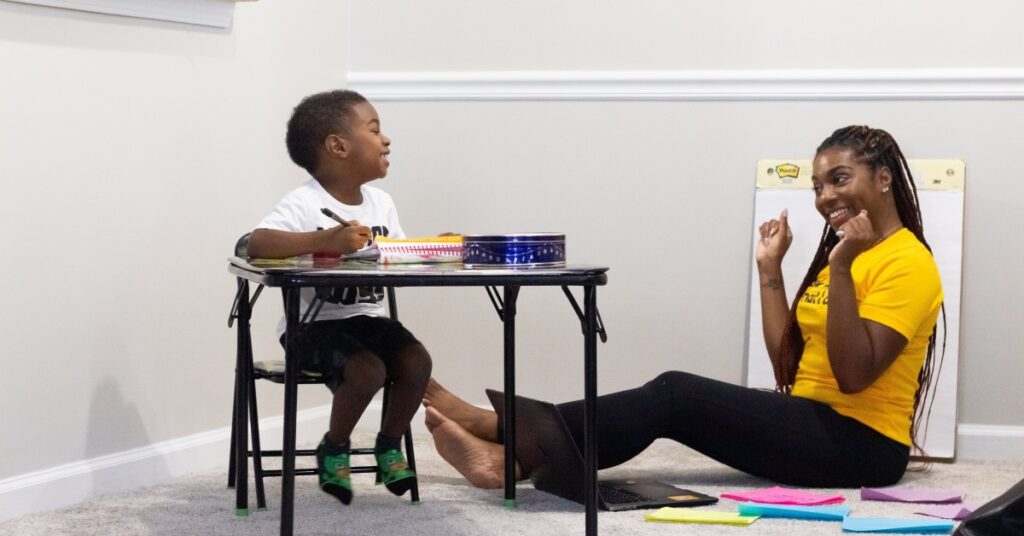
What Is a Master of Library and Information Science?
all LIS professionals must be information-literate. They can work in [...]

Dr. Jennifer Kurth is an Associate Professor of Special Education at the University of Kansas. Her academic expertise includes methods of implementing inclusive education and teaching educators how to “do the work” for students with severe disabilities—which is precisey why I sat down with Dr. Kurth to learn more about the university’s Master of Science in Education degree, which emphasizes low incidence disabilities.
“Low incidence” disabilities occur in one percent of the population of students with disabilities, the most common of which include Autism Spectrum Disorder (ASD), hearing impairments, or Down Syndrome.
We also covered the benefits of learning with a cohort, and the disconnect between inclusive education practices and school districts.
An inclusive teaching program offers fully inclusive assignments and practicum experience. As a student, the program takes extra steps to make sure students learn inclusive practices and gain the skills to implement them in a classroom setting.
When I first came to the University of Kansas in 2013, we had a traditional special education master’s program. It included a Positioning and Handling course for educators working with students with severe disabilities, as well as a class on how to teach communication skills. Both of these were perfectly handy. Still, they didn’t teach students how to create an inclusive learning environment by modifying curriculum or collaborating and co-teaching with general education teachers.
I worked with a colleague to do a total redesign around 2015. Within this program, you’ll find courses like Methods and Access to the Core Curriculum. In this class, we focus on how to teach academic skills in inclusive settings while identifying state standards. We then take those standards and make sure that there are assignments that reflect them in every class.
It’s not good enough for students in this program to say what they would do if they wanted to. They have to get out there and co-plan a lesson, teach it in their inclusive setting, record data, and monitor progress with an instructional plan.
It’s difficult because, like a lot of places, there isn’t an inclusive school available in the area. Often, those within our program take students—sometimes, for the first time—out of their special education classrooms and bring them to general education classrooms to teach them. I think there are a lot of skills involved in this approach. I’m happy to have them do it in a safe way, where they can blame if other teachers take issue with the change. They can say, “my professor is making me do it.”
| University and Program Name | Learn More |
|
Merrimack College:
Master of Education in Teacher Education
|
I think there’s value to having an on-campus program. I’m not convinced that we’ve got it figured out, but the mentoring and practicum site visits are essential.
I’m interested in having people form relationships with each other. I think being a special education teacher is an isolating experience. A lot of the time, you’re the only person with your expertise at your school site, or one of very few people. So, if you can find people who are figuring out what it means to be a low incidence special education teacher, or you can talk to about the job in general, it helps. I’ve noticed that my students find support through our classes and cohort models. They’re involved in each other’s lives. I don’t think students could develop this level of closeness online, especially if they were all over the country.
Currently, we welcome eight scholars per year through a KU-SOARS grant, which provides funding for them to complete coursework, attend a national conference, and participate in supervised teaching activities. The scholars are also committed to promoting and supporting inclusive education for students with severe disabilities. By completing the program, KU-SOARS scholars earn a Master of Science in Education (MSEd) degree and obtain a full endorsement in low incidence special education.
There are usually five or six others who are not on the grants, including a few international students that come to the U.S. because they think we’ve “got it all figured out.” In total, we probably have around 15 students.
It’s a small program, one that’s reflective of the numbers of students with low incidence disabilities. There aren’t a ton of low incidence teachers at typical school sites.
We had one student who moved back to Colorado and said that she felt frustrated by the disconnect between what we teach in the program and what’s really happening in the schools. I would say that’s similar to the feedback we hear from local graduates. Why aren’t inclusive education for students with low incidence disabilities more standard practice?
I’m always going to try to make the least dangerous assumption about people and say they’re doing the best they can with what they know. A lot of the time, it’s possible that educators didn’t learn inclusive practices or learned something else. They’re doing their best, but that approach isn’t very reflective of what we know is effective today: research-based practices.
This issue is rooted in hundreds of years of spent separating students with disabilities. Congress only realized that two million kids weren’t going to school in 1975 when they enacted the IDEA act. That’s a problem.
It may have taken them a long time to figure out the problem, but I don’t think it’s going to take hundreds of years to undo it. Still, we’re going to have to be systematically and purposefully addressing those educational barriers to create a new standard.
We’re talking about the deep-rooted assumptions and beliefs about what children with disabilities need and what how their teachers and parents should do. When I tell people I work in special education, they always say, “Oh my God, you must be so patient.” I tell them that I have a specific set of skills I can use with people—and that I’m not any more patient than anybody else. The assumptions get layered on. People don’t know that they should think about the field differently.
I like the students in my program to support each other. They can talk about their experiences in a way that wouldn’t be possible if they were isolated at schools by themselves. Having allies is important.
When I was a teacher, I met with other teachers for breakfast every Wednesday morning before school. Sometimes we talked about pressing issues, but mostly, we discussed things that, given our work, only we understood. Just having that group was helpful.
(Last Updated on February 26, 2024)
Questions or feedback? Email editor@noodle.com

all LIS professionals must be information-literate. They can work in [...]

Elective courses can customize your MLIS degree to a career [...]

Do you intend to work in your community's public library [...]

For decades now, libraries have been attuned to new developments [...]

A more diverse teacher workforce could provide a key to [...]
Categorized as: Special Education, Education & Teaching